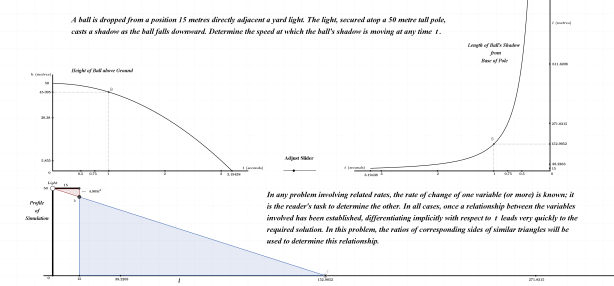Here’s problem involving a falling object and the speed at which its shadow travels along the ground. As usual, in related rates, once a relationship between the variables involved has been established, the calculus required to reach its conclusion is very straight forward.
In order to make efficient use of time, these problems provide students the opportunity to practice simple differentiation procedures. In addition, the graphs provided below open the door to a discussion on the Mean Value Theorem of differential calculus, serving to either introduce or reinforce that concept.
Falling Ball

Click on the link provided here to interact with the falling ball and its shadow.
The ball’s displacement from its release point was provided in the image above. As a review (since integral calculus has already been introduced), that displacement formula is once again derived through basic differential equations; this is shown directly below.
Acceleration, Velocity and Displacement

I’ve included solutions for t=1 and t=2 below. In keeping with my belief that students can learn effectively through comparison and contrast, three varied methods are shown.
Solutions

Thanks for reading.







